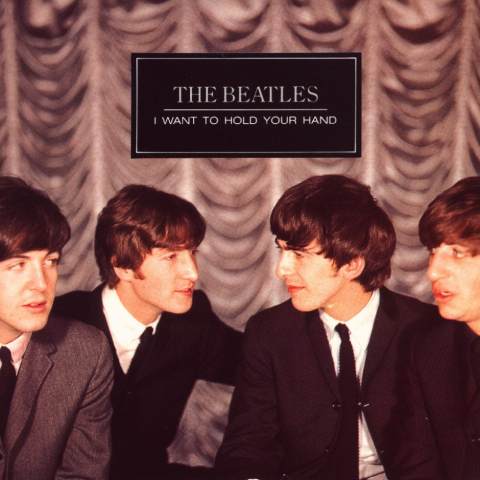Study Guide
Week 10
[ Reading ] [ Textbook ] [ Review ] [ New Material ] [ What You Should Know ] [ Homework ]
Textbook
Reading: pp. 97 - 104, 121 - 125
The textbook introduces some concepts of musical form and the science of sound.
Review
Review the last quiz and make sure you understand secondary dominants and identification of open position chords. This material will show up again on the final exam.
New Material

Song form and modulation
We look now at the Beatles "I Want To Hold Your Hand" (1964) [ score mp3 ]
The song doesn't start on the I chord. This is typical of the Beatles' introductions. It ends on the V chord, which is a very common thing for intros to do.
The verse lasts 6 bars. It uses the I, V, vi, and ii chords.
The prechorus is two bars long (the first "I want to hold your hand") and introduces the first harmony vocal part.
The chorus is four bars long (two more "I want to hold your hand"'s).
There is a modulation on the bridge ("And when I touch you I feel happy inside...") to C major. The modulation is done with a ii7 - V - I progression in the new key. To get back to G major for the next verse they used the same C-D-C-D-C-D chords as the introduction. The G - C chords highlighted below in blue are pivot chords, that is they belong to both C major (first row of Roman numerals) and G major (second row of Roman numerals). This makes the return to the original key smooth.
Dm7 G C Am Dm7 G C D C D C:
ii7 V I vi ii7 V I G:
I IV V IV V Look through the other examples of modulation.
Sharing music data between programs and platforms: General MIDI and MIDI files
General MIDI and Standard MIDI files were an addition to the original MIDI specification (1983).
General MIDI (GM) created a standardized library of 128 sounds arranged in families of 8. It has representative sounds from keyboards, percussion, and orchestral instruments, as well as some less useful synthesizer sounds and effects. There is a mapping of keys for drums sounds which are usually then played on channel 10. GM instruments must then have these same sounds and be able to play at least 24 at a time. This makes it possible to create a song and play it on any GM-compatible synthesizer or sound card, which is good news for multimedia and web developers.
A Standard MIDI file follows a file specification that is not special to one particular manufacturer. It does for software what the MIDI cable does for hardware, that is, it allows for the transportation of information from one program to another. For example, you can generate a MIDI file in Band in a Box and then open it in Sibelius.
What You Should Know
At the end of this week you should be able to:
Create a modulation in Band in a Box using copy, paste, and transpose.
Specify key signatures in Band in a Box and Sibelius to reflect the change in keys.
Understand what GM and MIDI files are used for
Homework
Reading: textbook pp. 71 -79
Add a modulation to the lead sheet you chose for Assignment 6. Decide what part of the original form you must use to establish the original key--you may have to use all of it if it is short. After the modulation you will return to the original form, this time transposed to a new key. You may want to use the copy and paste a section to save time entering the chords again. Copy the section you want to transpose, paste it into new bars. Now copy the first section, the part that you don't want to transpose. Under the Song menu you can then go into the Title/Key/Tempo option and transpose the music relative to C major (if you didn't enter a key signature for the piece before you started entering the chords the first time, calculate how much you want to raise your piece and indicate the same interval relative to C major--what Band in a Box thinks your piece is in). This will transpose the whole piece. Now, click on the first measure of the original section you copied before transposing. Paste (<command>-v) what you copied over the transposed version. You should now be back to the original for the measures in the section before the transposition started. Example.
Try the new version with some new different styles and pick the one you like best. Save the file in your area of the file server as a Band in the Box file with the name "assign9.___". Band in a Box will fill in the filename extension (indicated here by "___") with the three letter file extension code for the style you chose. When you go to save the file, leave the part to the right of the period alone--just change the part to the left of the period, which should read "assign9". For example, if you chose the cha cha style (I think everything sounds better as a cha cha. ..) you should end up with a filename of "assign9.SGJ", since "SGJ" is what Band in a Box uses to indicate cha cha style.
Turn in a copy on paper of your leadsheet with your name and "Assignment 9" written on the top.
©2001 Robert Willey
